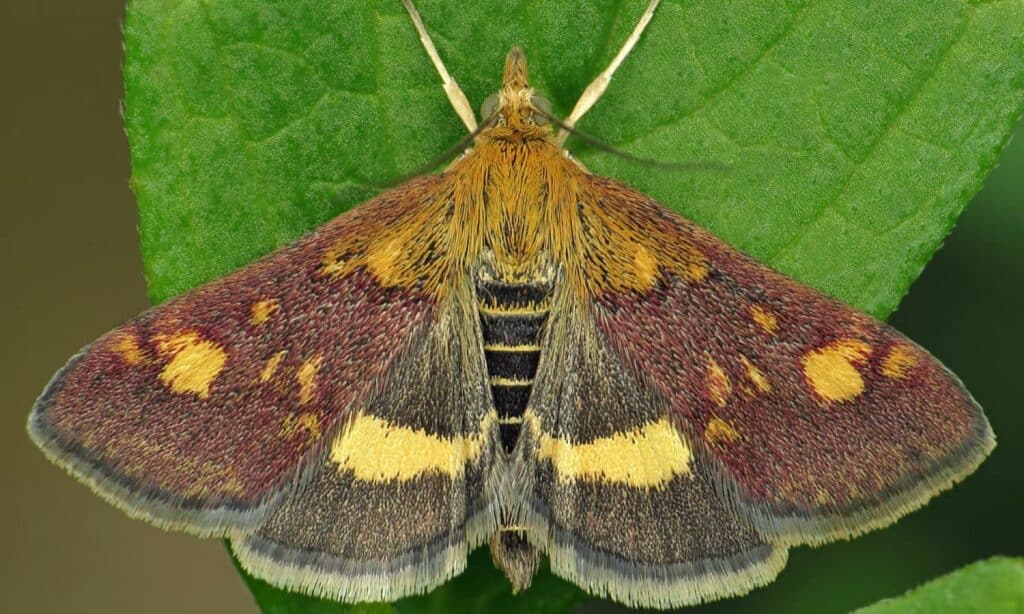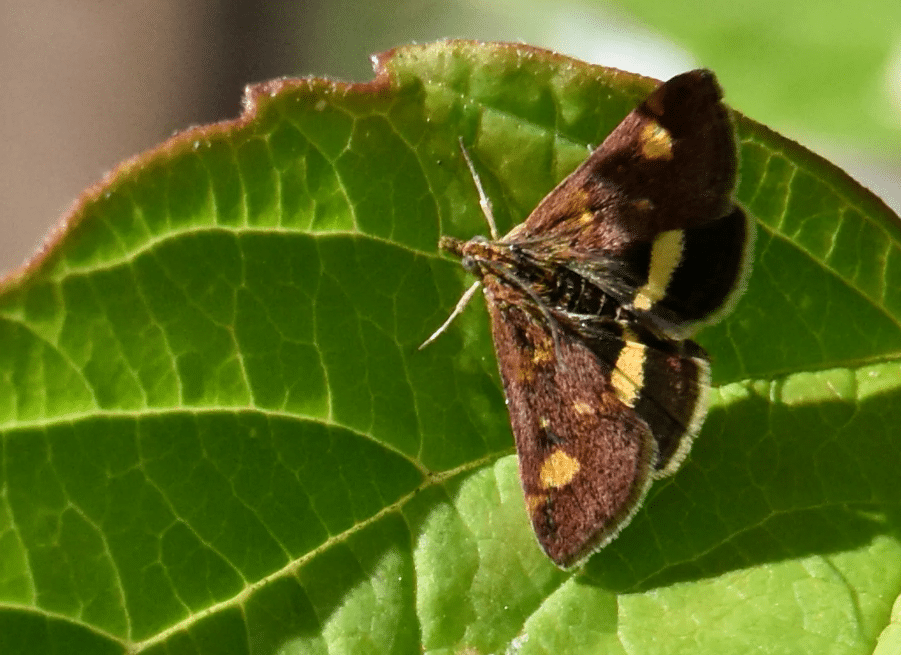Mint moths, scientifically referred to as “Pyrausta aurata,” are captivating creatures that inhabit various regions, fascinating entomologists and nature enthusiasts alike. In this comprehensive guide, we will embark on a journey through the enchanting world of mint moths, exploring their anatomy, life cycle, behaviour, ecological significance, habitat, and more.
Mint moths, with their stunning shades of green and intricate patterns, have long held a certain mystique in the world of insects. Although relatively diminutive in size, these species of moth play an important role in their ecosystems. From their distinctive appearance to their behavioural adaptations, there’s much to uncover about these remarkable insects.
Anatomy and Appearance
Mint moths boast a wingspan of approximately 20 to 25 mm, making them relatively small in the grand spectrum of insect life. Their most striking feature lies in their vivid colouration, ranging from delicate pale greens to deep emerald hues. This remarkable colour diversity serves a dual purpose: aiding in camouflage among mint leaves, their primary habitat, and acting as warning signals to potential predators.
The intricate patterns on their wings, often resembling delicate latticework, are a testament to the complexity of nature’s artistry. These patterns not only enhance their aesthetic allure but also contribute to their survival by providing visual distractions that confuse predators.

Behavioural Patterns
Mint moths are primarily nocturnal creatures, preferring the cover of darkness to engage in their essential activities. They exhibit a fascinating behaviour known as “hilltopping,” a phenomenon where male moths congregate on elevated points to attract potential mates. This strategic behaviour aids in mate location, especially given their relatively sparse populations.
Under the moonlit sky, mint moths venture out to seek nourishment. Their delicate proboscis enables them to extract nectar from flowers, making them valuable pollinators in their ecosystems. This foraging behaviour not only sustains their own existence but also contributes to the vitality of the flora around them.
The Intricate Life Cycle
The life cycle of a mint moth is a testament to nature’s intricate processes, marked by distinct stages each with its own purpose.
- Egg Stage: The journey begins with the female mint moth laying her tiny, pale eggs on the undersides of mint leaves. This careful placement offers protection against predators and the harsh elements.
- Larval Stage: Upon hatching, the larvae emerge with a voracious appetite for mint leaves. This stage is pivotal for their growth and development, as they consume vegetation to store energy for the next phase.
- Pupal Stage: In preparation for adulthood, the larvae spin silk threads to create cocoons that provide camouflage amidst the mint foliage. Inside these protective chambers, metamorphosis occurs, transforming them into fully-fledged adults.
- Adult Stage: As adults, mint moths engage in nocturnal activities, utilising their keen senses to locate sources of nectar. Their relatively short lifespan, typically spanning a few weeks, is dedicated to reproduction and ensuring the continuation of their species.
Ecological Significance
Beyond their aesthetic appeal, mint moths play a vital role in their ecosystems. They are valuable pollinators, facilitating the reproduction of various plant species. As they move from flower to flower in search of nectar, they inadvertently transfer pollen, enabling plants to produce seeds and fruits.
Additionally, mint moths are part of the intricate web of interactions within their habitats. They provide sustenance for predators higher up the food chain, serving as a vital link in maintaining ecological balance.
Habitat and Distribution
Mint moths exhibit a strong preference for mint plants, which serve as both their habitat and primary food source. Their close association with these aromatic herbs has earned them their common name. They can be found in various regions across the globe, from temperate to tropical climates, where mint plants thrive.

Conservation and Future Outlook
As with many species, the survival of mint moths faces various challenges, including habitat loss due to urbanisation, pesticide use, and climate change. Recognising their ecological importance, efforts are underway to raise awareness about these insects and implement conservation measures to ensure their continued existence.
Conclusion
The world of mint moths is a captivating one, full of intricate adaptations and behaviours that have evolved over millions of years. From their delicate appearance to their role in pollination and ecosystem balance, these insects serve as a testament to the beauty and complexity of nature. As we continue to explore and understand their world, let us also strive to protect and preserve it for generations to come.
Additional Resources
Sam loves to learn about animals and their habitats. He has been a nature lover from a very young age, and has been writing papers and articles about wildlife for as long as he can remember.
